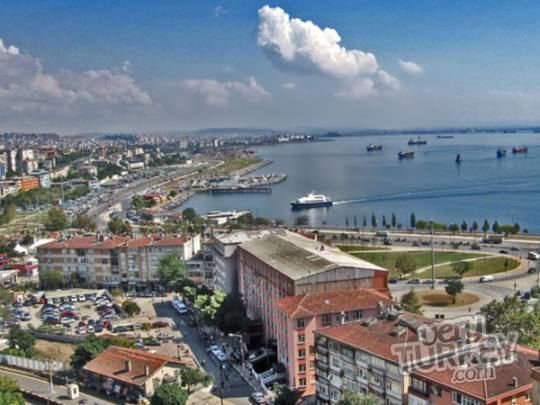Settled 6th century Area code(s) 0-216 | Time zone EET (UTC+2) | |
 | ||
Website www.kartal.bel.tr www.kartal.gov.tr Similar Bostancı, Nişantaşı, Taksim Square, Bosphorus, Kartal Stadyumu | ||
Residential project in kartal istanbul turkey
Kartal is a district of Istanbul, Turkey, located on the Asian side of the city, on the coast of the Marmara Sea between Maltepe and Pendik.
Contents
- Residential project in kartal istanbul turkey
- Map of Kartal2FC4B0stanbul Turkey
- Titanic business kartal istanbul turkey
- History
- Living in Kartal today
- Geography
- Religion
- Transport
- Sport
- References
Map of Kartal%2F%C4%B0stanbul, Turkey
Despite being far from the city centre, Kartal is heavily populated (total population of 541,209) (2008 census). The total land area is 147,000 m² which includes some countryside areas inland. Her neighbours are Maltepe the west, Sultanbeyli and Sancaktepe the north and Pendik the east.
It was the neighbour of Gebze (1923–1987), Şile (1923–1987), Beykoz (1928–1987), Üsküdar (1923–1987), Ümraniye (1987–2009) and Kadıköy (1928–1992 and 2004–2009). It was a neighbour again with Kadıköy from the northwest due to Ferhatpaşa quarter passed from Maltepe to Samandıra in 2004. However, this neighbourhood was ended with Ataşehir's separation from Kadıköy and Samandıra's separation (joined to Sancaktepe) from Kartal in 2009.
Titanic business kartal istanbul turkey
History
The center of Kartal (meaning 'eagle' in Turkish) was a fishing village on the Marmara shore during the Byzantine Empire called Kartalimen or Kartalimin in Greek, and was founded at the beginning of the 6th century. In the 11th century, the town was conquered by the ruler of the Seljuks, Suleyman Shah, and then in 1329 Kartal became part of the Ottoman Empire (however, the Byzantines re-took the city in 1403 and held it for 17 years).
By 1947, Kartal was an industrial area and with the introduction of commuter trains to Haydarpaşa Terminal from Gebze in 1973, Kartal became even more important as an industrial area of Istanbul.
The current trend is that as more and more housing is built near the coast, factories there are being closed down and moved inland. For example, the large cement factory on the shore, which is to be converted into a cultural center, was closed in 2003.
There is an historical Roman bath ruin near the Dragos Hill, which was under use of late Roman era is recovering by the Istanbul Archaeology Museums with the financial support of Kartal Municipality.
Living in Kartal today
Kartal is on the sea and there are ferries to Adalar (Princes' Islands) and to Yalova. But most people travel by road, it is easy to get from Kartal to both the D 100, the main road from Anatolia to the Bosphorus Bridge, and to the TEM, the large motorway which crosses the Bosphorus via the Fatih Sultan Mehmet Bridge. Also the coast road from Tuzla to Bostancı is another important route. The Sabiha Gökçen International Airport at Kurtköy, Pendik, is 15 minutes away. Finally, when the Marmaray project is completed it will be possible to reach the European side of Istanbul by a commuter rail system without interchange.
Kartal is the terminal station of Kartal - Kadıköy metro (M4). Haydarpaşa-Gebze Line for commuter trains also pass through Kartal.
With all these transport options Kartal is becoming heavily populated despite being far away from the centre of Istanbul. Luxury apartment complexes have been built on the coast, along with much more housing inland and this has attracted more shops and infrastructure.
There are a number of well-known private and state schools in the area, Maltepe University and Suleyman Sah University are the private universities of Kartal.
Housing is of good-quality in general. Building near the coast slowed down after the 1999 earthquake, when people became very aware that a major fault line runs just off this coast. However, building on the high ground inland is proceeding apace and Kartal is projected to be a major urban and industrial area by the 2020s.
The park around Ayazma Fountain in Yakacik is a popular picnic spot for Kartal's people.
On 4 June 2007, the Greater Istanbul Municipality and the former mayor of Kartal announced that a new futuristic type urban city environment would be built in Kartal-Pendik. The city will be built on an area which is currently an abandoned industrial site. Upon completion, Kartal will be the new centre of Asian Istanbul. It is intended that the new city will be the world's first fully green "city". The plan includes a central business district, luxury residential developments, cultural facilities such as concert halls, museums, and theatres, and leisure locations including a marina and tourist hotels.
Geography
Behind the coast the land rises sharply up to Yakacık Hill ("the balcony of Istanbul") and Aydos, on these hills the land is fertile and has a mild climate.
The coast of Kartal has sandy and clay soils, whereas the northern part of the district is mostly silica. On the Yakacık Hill, there are limestone and quartz deposits.
Religion
The major population of today's Kartal are Muslims. Kartal Cemevi is one of the several Alevi temples in Istanbul. Kartal Surp Nişan Armenian Orthodox Church (Holy Cross Armenian Church) is an Armenian Church located on the downtown of Kartal. Muhammad Maarifi Mosque which is also in Kartal has the mausoleum of a Maarifi Islamic order founder. There are seventy mosques within the district.
Transport
Sport
Kartal S.K. is the local football club of Kartal which plays on TFF Second League.
